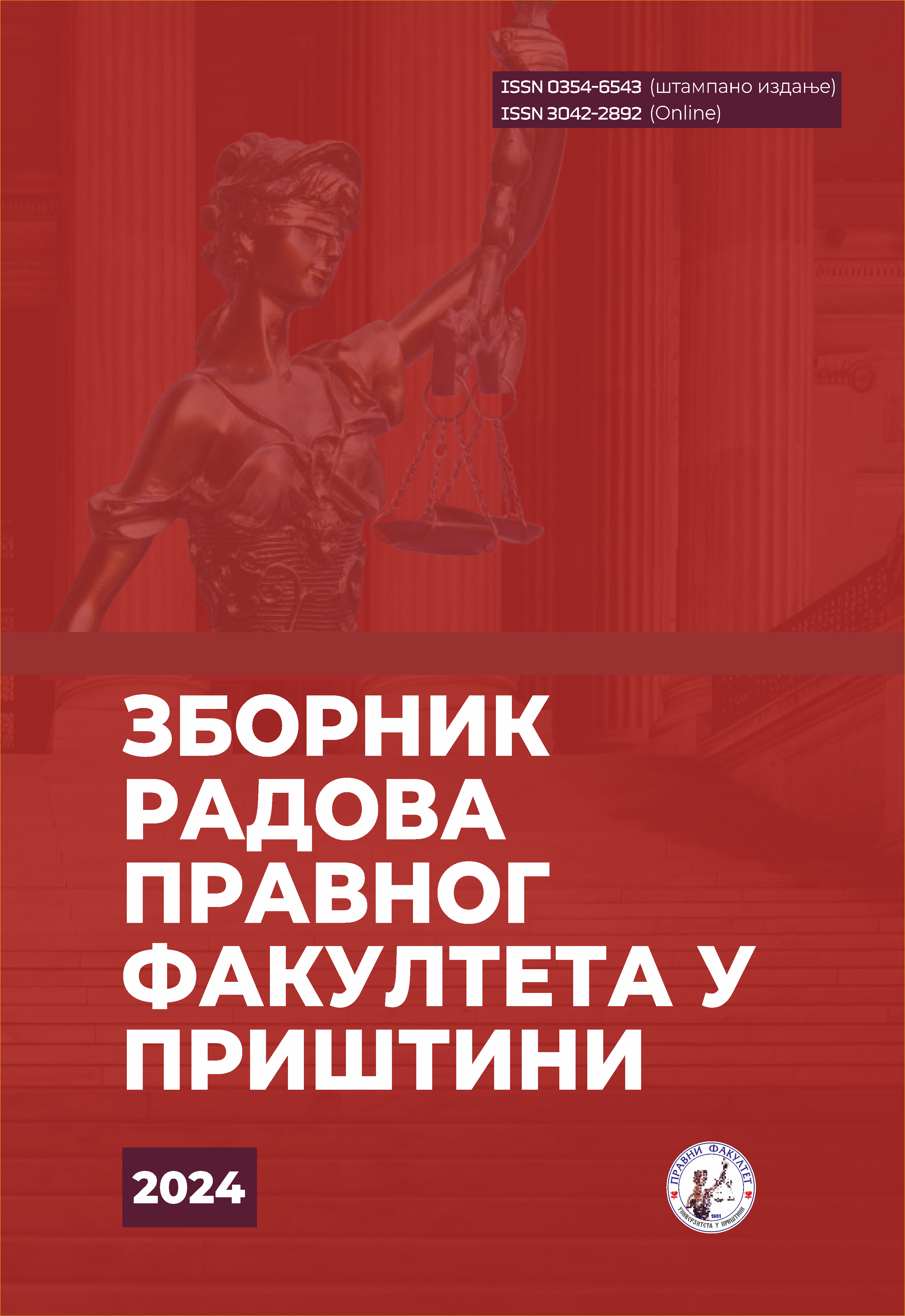SCOPE OF INTERNATIONAL LABOR STANDARDS IN ELIMINATING CHILD LABOR/WORST FORMS
DOI:
https://doi.org/10.63177/zrpfpr.012024.01Keywords:
International Labour Organization, International Labour Standards, elimination of the worst forms of child labour, Minimum Age Convention No. 138, Worst Forms of Child Labour No. 182Abstract
The International Labour Organization (ILO), through its extensive normative activities – such as the adoption of international labor standards – promotes the protection of human rights within the socio-economic sphere. Historically, since its establishment in 1919, the ILO has adopted 191 conventions, 208 recommendations, and 6 protocols, along with numerous declarations. When we contrast these data with the rising incidence of child labor concerning the ILO's normative and other activities, questions arise regarding the effectiveness of these international labor standards in eliminating not only the worst forms of child labor but all forms of child labor exploitation. It is important to note that the adoption of conventions and recommendations that directly address child labor issues, as well as those indirectly influencing the elimination of child labor (e.g., Convention No. 29 on Forced or Compulsory Labor; Convention No. 105 on the Abolition of Forced Labour; Convention No. 138 on Minimum Age for Admission to Employment, among others), and the numerous ratifications of these labor standards, represent only initial steps towards the complete eradication of child labor. The successful eradication of child labor is an inevitable long-term goal due to its deep entrenchment in poverty, underdevelopment, and prevailing social and cultural attitudes.
An analysis of child labor over a three-year project cycle, considering the social, economic, political, and cultural contexts, indicates that despite extensive regulations at the universal, international, regional, and national levels, and despite modern efforts to entirely eradicate it, child labor persists with an increasing trend of exploitation and abuse. Therefore, the successful eradication of child labor remains a long-term objective due to its profound roots in poverty, underdevelopment, and socio-cultural attitudes.
References
About Rights, Center for Economic and Social Rights, Brooklyn, USA, 2009.
Балтић, А., Деспотовић, М. 1968. Основи радног права Југославије и основни проблеми социологије рада, Савремена администрација, Београд.
Билић, А., Буклијаш, Б. 2006. Међународно радно право (Уз посебан осврт на Међународну организацију рада), Сплит.
What is child labour, https://www.ilo.org/ipec/facts/lang--en/index.htm (28.06.2024)
World Day Against Child Labour, Child labour rises to 160 million – first increase in two decades,https://www.ilo.org/global/about-the-ilo/newsroom/news/WCMS_800090/lang--en/index.htm (10.07.2024)
Вујовић, М. М. 2023. Уставноправне претпоставке забране дечјег рада, Докторска дисертација, Правни факултет Универзитета у Крагујевцу, Крагујевац.
Вучковић, Н., Шаховић, 2000. Правa детета и међународно право, Југословенски центар за права детета, Београд, 56. У: Вујовић, М. М. 2023. Уставноправне претпоставке забране дечјег рада, Докторска дисертација, Правни факултет Универзитета у Крагујевцу, Крагујевац, 92-93.
Defining child labour, http://www.ilo.org/ipec/facts/lang-en/index.htm 12.07.2024
Eliminating the worst forms of child labour: A practical guide to ILO Convention No. 182 Handbook for parliamentarians No. 3, International Labour Organization and Inter-Parliamentary Union, Geneva, 2002.
ILO & UNICEF (09. Јune 2021), Child Labour Global Estimates 2020: Trends and the Road Forward, New York: 2021, https://knowledge.unicef.org/resource/child-labour-global-estimates-2020-trends-and-road-forward (19.07.2024)
Јашаревић, С. 2008. Социјално-економска права у вези са радом у међународним и европским радним стандардима, Радно и социјално право, Часопис за теорију и праксу радног и социјалног права, Београд, бр. 1.
Марковић, С. А. 2024. Карактеристике дечијег рада код непраћене и раздвојене деце у Србији, Докторска дисертација, Факултет политичких наука, Универзитет у Београду, Београд.
Перић, C. 2013. Пристојан рад, Правни факултет Универзитета у Приштини са привременим седиштем у Кocовској Митровици, Београд.
Перић-Ковачевић, C. 2015. Забрана дечијег рада – de iure vs de facto, Радно и социјално право, Часопис за теорију и праксу радног и социјалног права, Београд, бр. 1.
Перић-Кoвачевић, С. 2020. Забрана дечијег рада – елиминисање најгорих облика дечијег рада, Тематски зборник радова, Научно истраживачки пројекат: Правни аспекти савремених друштвених кретања у Републици Србији, Правни факултет Универзитета у Приштини са Привременим седиштем у Косовској Митровици, Косовска Митровица, Св. 2.
Петровић, А. 2009. Међународни стандарди рада, Правни факлутет у Нишу, Ниш.
Пешић, P. 1969. Право Међународне организације рада (порекло-структура-делатност), Нови Сад.
Пешић, P. 1966. Радно право, Научна књига, Београд.
Смернице за извештавање медија о злоупотреби дечијег рада у Републици Србији, Међународна организација рада, Одсек за Фундаменталне принципе и права на раду – ФУНДАМЕНТАЛС (FUNDAMENTALS), Женева: 2018.
Доступно: https://www.ilo.org/media/411176/download (25.07.2024)
Child Labour, https://www.ilo.org/topics/child-labour (20.07.2024)
Шундерић, Б. 2001. Право Међународне организације рада, Правни факултет у Београду, Београд.
Конвенција Међународне организације рада бр. 182 о најгорим облицима дечијег рада из 1989. године и Препорука бр. 190 о забрани и хитној акцији за укидање најгорих облика дечијег рада, закључена 17. јуна 1999. године у Женеви, „Службени лист СРЈ-Међународни уговори“, бр. 2/03 од 31.1.2003. године.
Downloads
Published
How to Cite
Issue
Section
License
Copyright (c) 2024 Зборник радова Правног факултета Универзитета у Приштини

This work is licensed under a Creative Commons Attribution-NonCommercial 4.0 International License.






